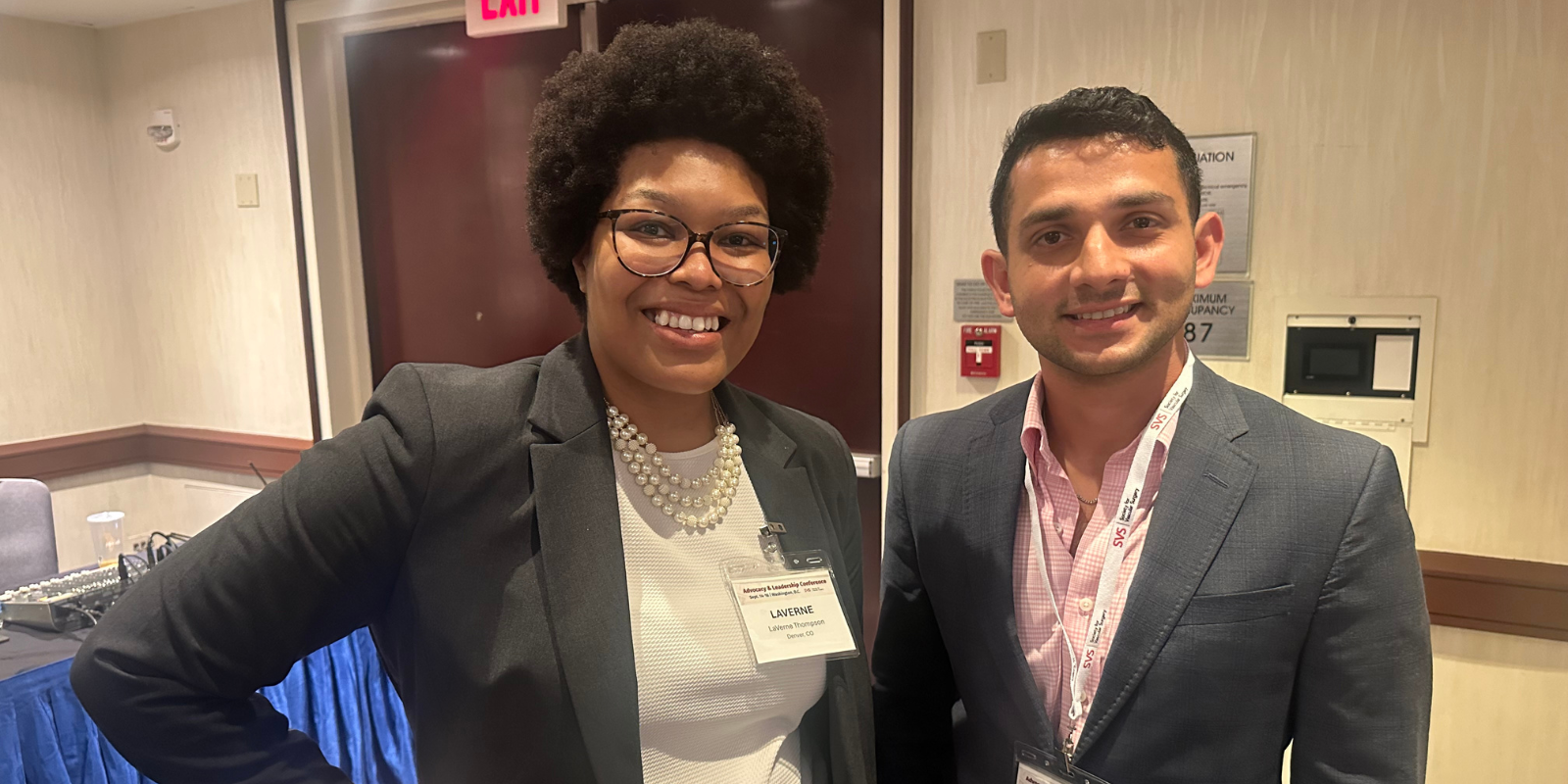Six days after Liz Young donated her left kidney to a stranger in Pennsylvania, she and her mom were walking a slow but determined 3.1 miles in the annual Donor Dash 5K.
The event honors organ and tissue donors, celebrates transplant recipients, and recognizes those waiting on the transplant list, and it was important to Young to be with the community that her choice had allowed her to join. Plus, it was a way to demonstrate what she’d been saying for months: There is nothing she could do with two kidneys that she couldn’t also do with one.
To further emphasize that point, on Nov. 5, 2022, just four months after her July 11 donation surgery, she completed her ninth Ironman triathlon.
“I’m so glad I could be a donor and so grateful that it could work out,” Young says. “I feel like the lucky one. It’s amazing that my body was able to do this, and that I’m able to do everything that I did before and feel the joy that I do.”
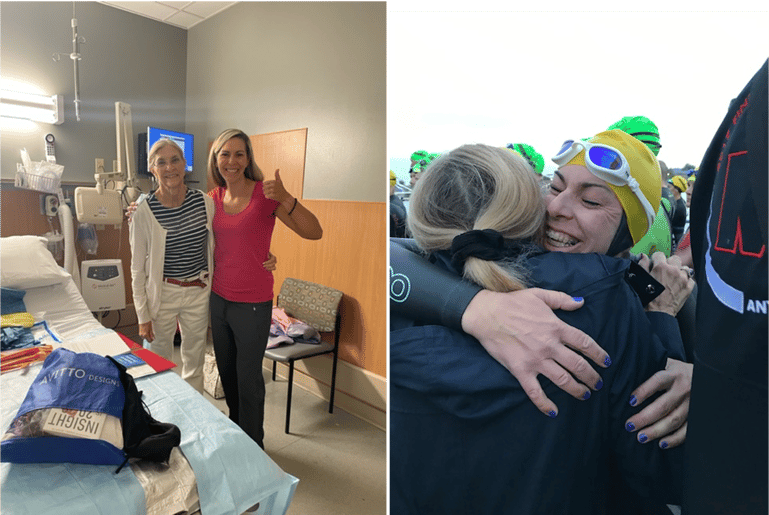
Liz Young with her mom after her transplant surgery (left) and hugging her mom after the swim portion of a triathlon.
"Liz Young is a perfect example of how donors can not only resume healthy lives but also continue to excel as elite athletes or in any other field they choose after donating a kidney or a piece of their liver," says Elizabeth Pomfret, MD, PhD, chief of the Division of Transplant Surgery.
Guided by curiosity
The funny thing is, Young was a teenager who leaned on childhood asthma, which wasn’t bothering her by high school, to get a doctor’s note excusing her from PE. “I absolutely could have taken PE, I just didn’t want to,” she says. “I was not an athlete; I was a band nerd through and through.”
In college, a friend invited her to go for a run one day and “I said, ‘Oh, I’d love to. What do you do with your arms?’” Young recalls. “I didn’t know if it was right-right, left-left, but I felt awkward, so I showed her what I was thinking and she said, ‘That would be skipping.’ So, I was 20 years old and going for my first run.”
Something about that run unlocked a curiosity about what else her body could do, and curiosity has been a guiding ethos in her life. Not long after, she signed up for her first 5K and the feeling of victory that accompanied crossing the finish line was one she would recognize years later completing her first triathlon: I can’t believe I just did that.
As for that triathlon, it began as an item on a bucket list Young wrote in 2007. Again, she was guided by curiosity to see what her body could do, and when she told her mom about her plan, her mom said something like, “Oh, good for you, honey! But you can’t swim.”
That didn't stop her, and a couple of swim lesson later she was ready. Using her college mountain bike, purchased from a garage sale and weighing an absolute ton, she completed that triathlon – “a baby one,” she notes – and just kept going.
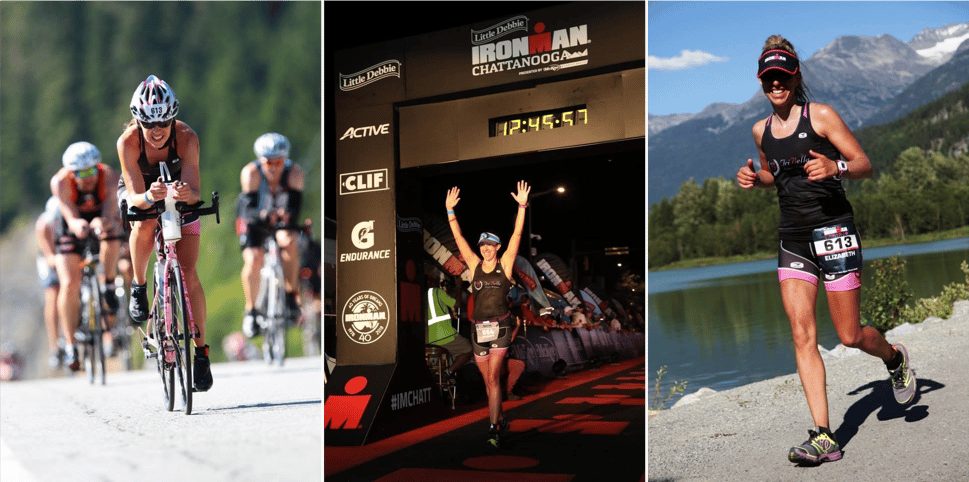
Liz Young has completed nine Ironman triathlons, with plans for another in Germany in June.
To enhance her training, she joined the Rocky Mountain Triathlon Club and met a woman named J’ne, now Young’s good friend. J’ne had become a living donor by donating a kidney to someone in need, and told Young, “You can do anything with one kidney.”
Learning about donation
At that point, Young had completed seven Ironman triathlons and had plans for even more long-distance races. She knew her body well and what it was capable of, but she was fascinated by J’ne’s experience of kidney donation and delved into research when she got home.
She learned that 13 people die every day waiting for a kidney, and that 87% of those on the national transplant waiting list – about 92,000 people – are waiting for a kidney. And she thought about J’ne’s comment that her life had only gotten better since she donated.
“What an incredible gift I could give,” Young says. “I realized I would love to give the gift of life in something almost like a legacy. At this stage in life, I won’t be having children, and in this way a piece of me could continue to live on in someone else.”
Soon after, her brother told her about a relative, Ron, the husband of their mother’s first cousin, who needed a kidney. Though Young ended up not being a match for Ron, she learned she could name him as the beneficiary of her kidney, giving him priority on the transplant list. He subsequently was able to receive a transplant at the Mayo Clinic, and is enjoying time with his two grandchildren “and it’s so touching that this experience could help bring our family together,” Young says.
After a lot of prayer, many meetings with the UCHealth University of Colorado Hospital transplant team, rounds of blood draws, and many tests, Young learned she was qualified to be a nondirected kidney donor. Her surgery was July 11, performed by Thomas Bak, MD, an associate professor of transplant surgery in the CU Department of Surgery.
Getting up and moving
Very soon after her two-and-a-half-hour surgery, Young was slowly walking down the hallway outside her hospital room, supported by a walker, a nurse, and her mother. The next day, she was discharged, a month to the day after completing her eighth Ironman triathlon.
As she left the transplant wing, she stopped to ring Laura’s Bell, named in honor of a previous kidney donor and her recipient; ringing it signifies the end of a donor’s time in the hospital. She tearfully read the inscription on the plaque by the bell: “Today, I ring this bell to honor the heroes before me, to encourage the heroes who will follow me, and to acknowledge the hero I am.”
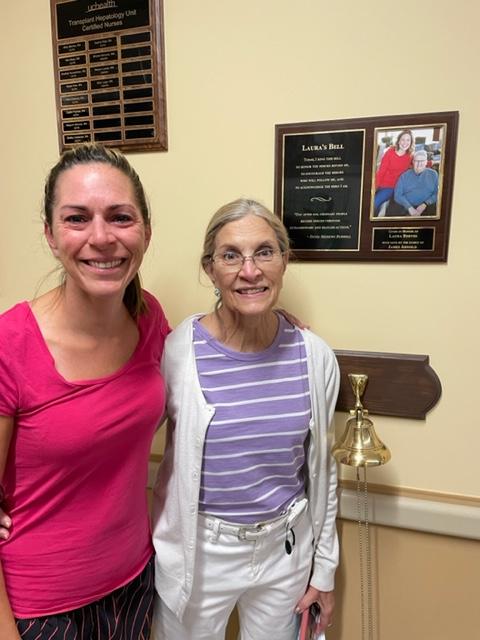
Liz Young with her mom after ringing Laura's Bell.
Because the surgery was nondirected, it wasn’t until later that Young learned the recipient was a Pennsylvania man.
As she recovered, she took walks around her neighborhood and tuned in to the sensory experiences of birds chirping and breezes blowing. Within the first three weeks after surgery, she had walked 74 miles and learned the vital lesson of listening to her body.
“I was going with what my body could give me, then giving it the grace to rest when it was tired,” Young explains. “Within the first two weeks after surgery I had this idea to do another Ironman in the fall, but I wanted to get permission from Dr. Bak that it would be OK. So in an email I expressed how if I took my time and looked at the Ironman not as a race, but as just a long day, I thought it would be something my body could do.
Young says she was nervous Bak would want more information on idea and jokes that “I didn’t really explain what an Ironman is. I thought, ‘He’s a surgeon, he can look it up.'” She felt elated to have her surgeon’s approval to proceed.
Joy in curiosity
As she trained for the Ironman in Florida, she listened to and honored her body. One morning, she joined a group of friends for a 70-mile training ride and was dragging. She thought she’d wake up once she was on her bike, but after about four miles didn’t feel any more awake and her friends were far ahead. Listening to her body, she turned around, texted her friends that she needed to rest, and took a nap in her car before heading home.
“There’s this culture of wearing yourself out and maxing out, but you also have only one body,” Young says. “Where you make real gains is when you allow your body to rest and recuperate. I’ve always been curious to explore what my body can do, and I feel like I have such a better understanding now that it is not only about pushing its limits. What is my body able to do in its most quiet moments?”
She crossed the finish line in the November triathlon not in record time, but with as great a sense of accomplishment as she’s ever felt. Next month, she’ll participate in an Ironman in Hamburg, Germany, fulfilling a longtime dream to do an Ironman in Europe. Her mother will join her.
And in August, she’s moving to Beijing, China, to continue her career as a middle school counselor at an international school.
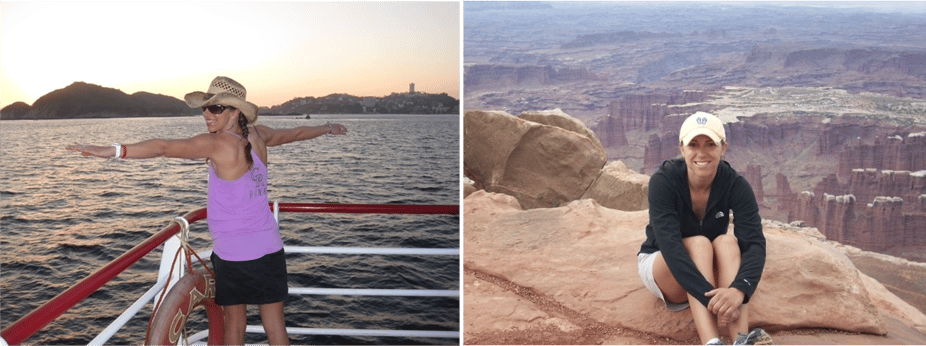
Liz Young has always followed her curiosity about the world to new and interesting places.
“I’ve really thought about this for a long time, we’re talking 10 years,” Young says. “I realize I was putting limitations on myself, thinking with my age, that ship has sailed. I think something else I gained from the donation was to remember the joy in curiosity and in expanding my world vision.
“The human body is capable of so much and we mentally create limitations on ourselves – we come up with barriers or we create reasons why we think we can or cannot do something. I often think about a quote I heard once: ‘What can my body do with me today?’”

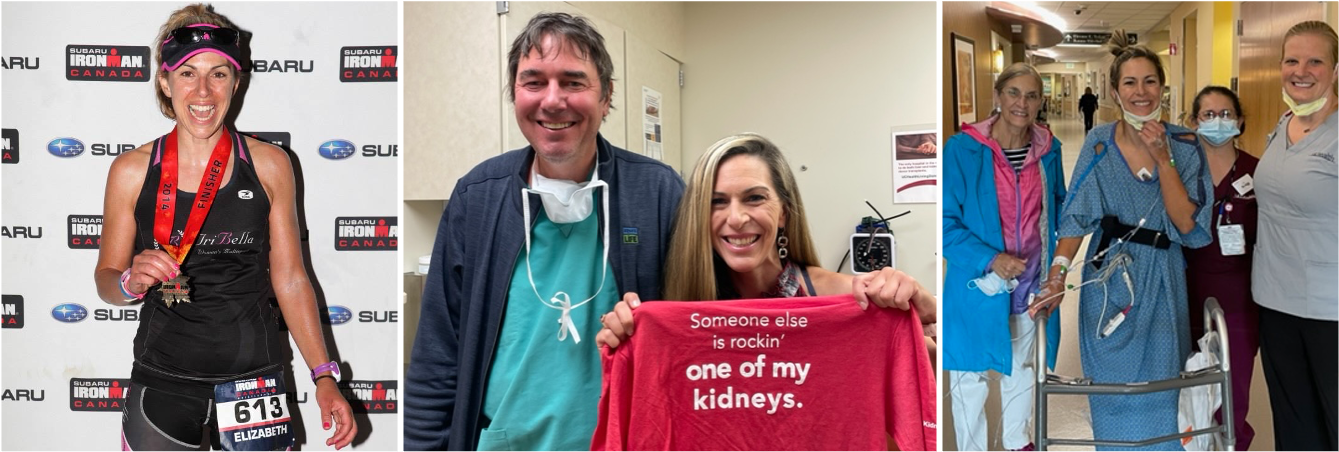
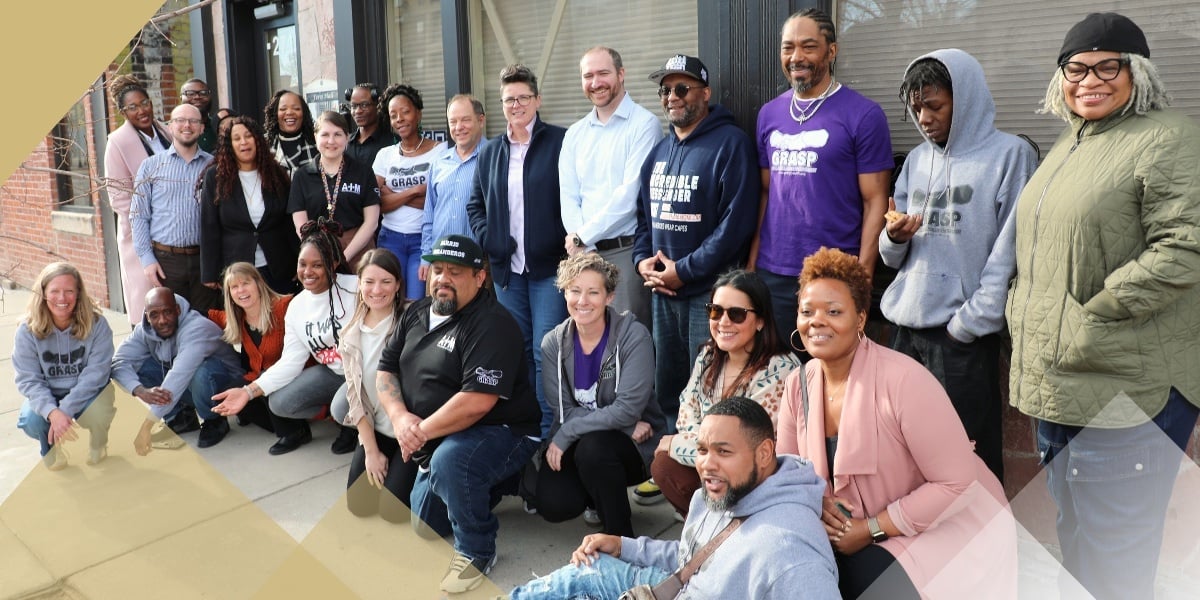
.png)
